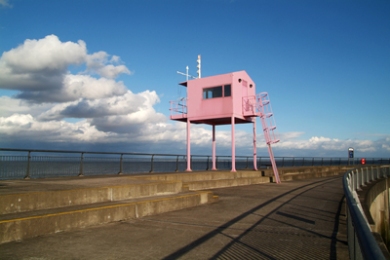In this lecture James told us about some of the very first electronic instruments which sound artists from the 1920’s experimented with. For example, the Telharmonium (also known as a Dynamophone) was inventedd in 1897 by Thaddeus Cahill. It was an early electronic organ which sent electrical signals over wires and could be heard by means of speakers or ‘horn’ speakers as they were known. The telharmonium used tonewheels which generated musical sounds as electrical signals. It is considered the first synthetic instrument.
Other instruments mentioned were the Theremin (1919), Trautonium, Hammon Organ (which, like the Telharmonium, uses tonewheels) and the Ondes Martenot, which has a similar sound to the Theremin.
Lee De Forest was an inventor from the early 20th century who discovered the vacuum tube which led to radio and the first electrical device which could a take sounding signal and make it louder/stronger. A quote of his reads: “I discovered an invisible empire of the air, intangible, yet solid as graphite.”
We then watched a clip of a piece called ‘Fete Des Belles Eaux‘ 1937 (post sonic- boom) by Oliver Messiaen. This piece combined visuals with sounds by accompanying fireworks and water jets with music. The music was played by 21 different composers and was scored for 6th Ondes Martenots. What I found interesting about this piece was how it represented that sound can accompany movement, thereby making it not just a sound and visual piece, but perhaps a performance piece too.
We then listened to a piece by John Cage called ‘Imaginary Landscape Number 1‘ 1939. This was part of a short series of Cages’ which illustrate different landscapes with the use of sound. Landscape number 1 was a tense, frightening and ominous sounding piece which was made up of variable speed turntables, frequency recordings, cymbals and muted piano sounds. I imagined an endless, very dry and very still land with nothing living within it, but perhaps someone was hiding behind the bare trees, following you.
This collection of 5 compositions challenged people to really listen and to imagine something without the use of visuals, but simply with what we associate with different sounds. It also represented an improvement of amplifying and recording techniques in the studio.
We also listened to Pierre Schaeffer’s – ‘Etude Aux Chemin De Fur‘ which we learned was a pre-cursor to the cut and paste technique which is so associated with electronic music, particularly Hip-Hop and Rap.
And Edgar Varese’s – ‘Deserts‘ 1950-1954, therefore taking four years to make. Varese was considered the father of electronic music and composed for orchestra but more significantly for tape.
Another early electronic instrument from the 20th century would be the ‘Mini Moog’ which was an affordable synthesizer, therefore it was quite popular, particularly in the 1970’s.
We also looked back at Brian Eno who coined the phrase ‘Ambient Music’ thereby proclaiming him the technical inventor of the genre as nobody up until then had given it a title. Eno had an interest in electronic music, and therefore worked with a crossover of ambient and electronic music throughout the 1970’s. A clear example of ambient music would be Claude Debussy‘s ‘Clair de Lun‘ 1905, a very calm, relaxing piano piece which, although very beautiful and tuneful, it can easily fade into the background, as it becomes more of a feeling than a tangible, in-your-face sort of composition.
We also watched a clip of Eno talking about something that most people, definitely not I, have not realised and/or questioned before. He explained that once he was at an airport on a beautiful sunny day which made the building and the airplanes look magnificent, but the music that was playing all over the airport was dreadful. He observed that it was overly happy and almost like it was compensating for the risks of flying, of the possibility of something going wrong which many people feel anxious about. Overall, he thought the music sounded false and did not fit with the environment at all and wanted to change that, he wanted to create music that worked in public places. This is where his interest in ambient and electronic music could mesh together to create something that didn’t steal focus, but instead would create a pleasant atmosphere.
James also showed us a clip of a musician from the 70’s called John Fahey whose music I personally fell in love with. It was a finger picky, folky song called ‘Poor Boys Long Way From Home’ . It was yet another example of the versatility of ambient music, that many songs we listen to could actually be influenced by ambient music, the idea of something repetitive, unassuming, soothing and calm. I would consider listening to such music when I want to fall asleep. In fact I think i’ll listen to John Fahey now.


















